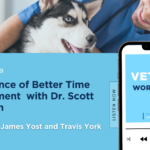
This article appears in Charlotte Business Journal.
Many Americans save diligently for retirement, deferring a portion of every paycheck into an employer-sponsored plan or socking money away in a traditional IRA. They are counting on this money to fund their desired retirement lifestyle, but when retirement comes, many are dismayed to see a big chunk of the money eaten up by taxes.
In most cases, these taxes could have been reduced or even avoided altogether. Converting retirement money to a Roth IRA means you and your heirs could end up saving thousands of dollars on future tax bills. But what are some other benefits of converting to a Roth IRA? Let’s take a look.
Some Benefits of Owning a Roth IRA
Tax-free distributions
Traditional IRAs are qualified plans, meaning the initial funds go in pre-tax and are allowed to grow on a tax-deferred basis. The money is taxed at ordinary income tax rates when withdrawals begin, usually when the saver is in retirement.
Roth IRAs are the opposite: They are funded with funds that have already been taxed. They are allowed to grow tax free, and distributions are not taxed — and you keep 100% of your distributions in your pocket.
When you convert a traditional IRA to a Roth IRA, you pay taxes on the money in the account during the year the conversion takes place. However, you won’t pay any future taxes on the funds. This is beneficial if tax rates increase in the future.
Flexibility in withdrawal
Owners of traditional IRAs must begin required minimum distributions (RMDs) at age 73 in 2023 and age 75 in 2033. These annual withdrawals happen whether or not you need the income and are taxable at ordinary income rates. And if you don’t take them, you could end up paying a stiff penalty to the IRS.
Required distributions don’t apply to Roth IRAs, so by converting a portion of your traditional IRA to a Roth, you reduce the RMD from your traditional IRA and reduce your tax bill.
More money for your heirs
When a traditional IRA is left to a non-spousal beneficiary, such as an adult child or extended family member, the recipient will owe taxes on their inheritance. Roth IRAs can be passed on to heirs tax free, and converting to a Roth now means you won’t leave a big tax bill for your loved ones.
Lower Medicare premiums
All Americans become eligible for Medicare benefits at age 65. While Medicare is less expensive than most traditional health insurance, you will still pay premiums for Medicare Parts A and B. How much you pay in premiums is based on your modified gross income (MAGI), which can vary from year to year. Since Roth IRA distributions aren’t counted as taxable income, converting to a Roth IRA could lower your MAGI in retirement and result in lower Medicare premiums.
The Right Time for a Conversion
While there are many benefits of using a Roth IRA, strategically timing a conversion allows account owners to maximize the full tax savings. For example, let’s say Joe owns a traditional IRA and was recently laid off from his job. This could be a good year for him to convert his IRA to a Roth IRA, since he hasn’t made as much income, and the taxes resulting from the conversion won’t push him into a new tax bracket this year.
Conversely, you may not want to undertake a Roth IRA conversion if your income (and tax bill) is unusually high for the year. For instance, let’s say Bob inherited a traditional IRA from his mother, bumping up his tax bill for the year in which he received the inheritance. Bob may want to postpone the conversation to next year, when he expects his annual income to be lower.
Converting during a downturn in the market could also help maximize savings. Let’s say Sue has a traditional IRA that has declined in value due to a market drop. She decides to convert to a Roth IRA while the market is still down, and the account value is lower. Since taxes are calculated based on the value of the converted amount, she will end up paying less in taxes than she would have if she waited for her account value to come back up.
Deciding when and how much to convert can be tricky. It’s why we recommend working with an experienced financial professional, who can help you explore all the options and find the right strategy and timing for you.
Are you interested in learning more about converting your traditional IRA? Contact us today!





